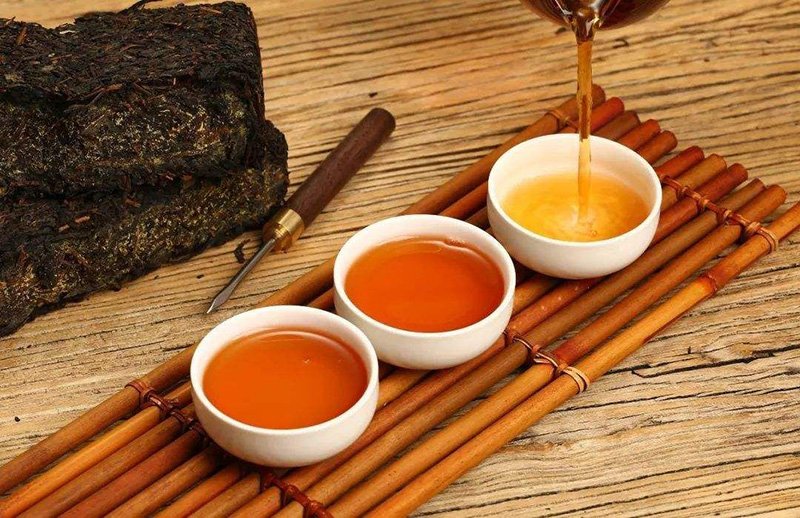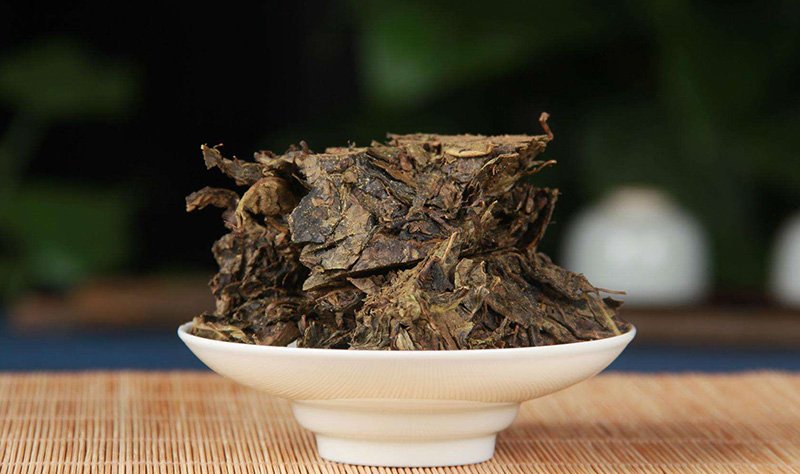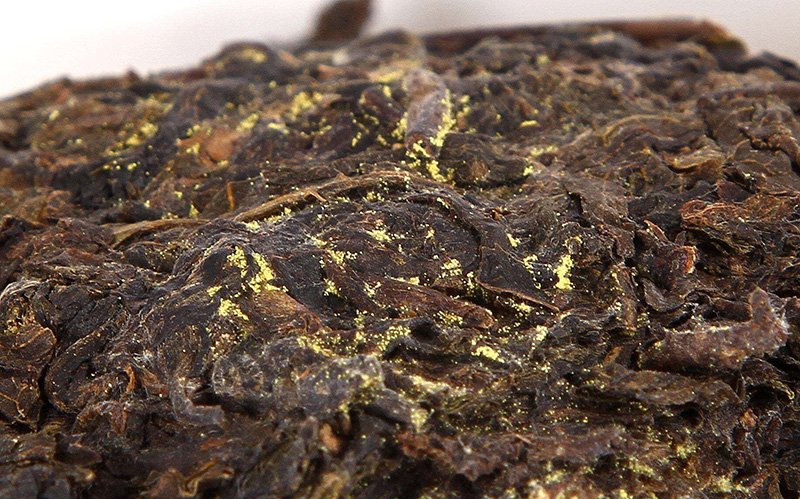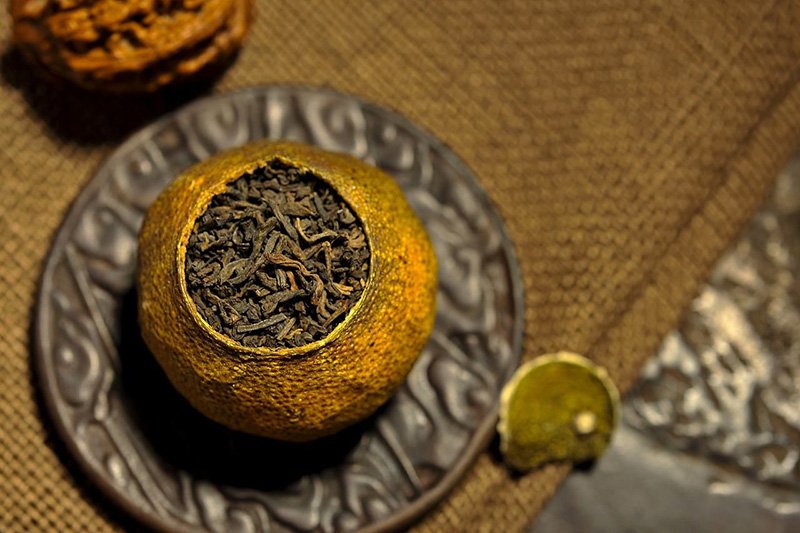
Introduction
Many people may confuse dark tea with black tea, which came out with a mistake translation of Chinese tea in history. Dark is origin in China, also called “black tea” in location, belongs to post-fermented tea. And black tea was called “red tea”, belongs to completed-fermented tea.
Dark tea is one of the unique teas in China, which has a long history and occupies a large part of the consumption market in China.
Its origin is said to be on the ancient Silk Road, merchants did not protect the green tea well during the transit. The tea leaves were repeatedly soaked in rain and then dried in the sun, tea went bad. The merchants brewed the dark tea, found that they tasted good, so they improve the processing and promoted them.
Another viewpoint is that in western China, there has long been the custom of making dark tea for drinking. To better preserve the tea, the local people extruded the tea into a tea cake for long-term consumption. Of course, there is no way to verify this point too.
Dark tea gets a lot of fans because of its unique taste. Pu-erh tea, a subtype of dark tea, has a high collection value. Precious Pu-erh tea is often driving up to an unimaginable price.
Different from other types of tea, dark tea taste without the herbal flavor. You may not think of that is tea when your first try. It tastes slightly sticky, without either the freshness of green tea or the rich fragrance of black tea, but with a distinctive sweetness, people described as “aging taste“.
Since dark tea is post-fermented, it is believed that the longer it ages, the higher its nutritional value, and the better it tastes. Just like the wines with aging, dark tea is given a collection and investment value.

Dark Tea Nutrition Facts
Tea Polysaccharide
Tea polysaccharide is a kind of acid glycoprotein, and has a large number of mineral elements, which are the main nutrients of dark tea. Tea polysaccharides are formed in the long fermentation process of dark tea, so the longer the aging time of tea cake, the higher the content of tea polysaccharides. And tea polysaccharide also is the main ingredient which constituted the sweet taste of dark tea.
Tea Pigment
The tea pigment contained in dark tea is mainly Theaflavin and Thearubigins, which are converted from tea polyphenols. Tea pigments give dark tea its amber color, and it’s a natural antioxidant with many benefits.
Tea Saponin
Tea saponin is a special Glycoside compound in tea. Tea saponin has been widely used in the industry besides lowering cholesterol levels and killing bacteria. Sometimes we brewing tea, will found there is some tea foam on it, that is caused by the tea saponin.
Amino Acids
Scientists found γ-aminobutyric acid inside the dark tea, a nutrient made from glutamate. Because dark tea is post-fermented tea, the anoxic environment inside the tea leaves tends to breed some microorganisms. At present, it is still not clear whether the formation of γ-aminobutyric is the result of the process of making dark tea or the result of microbial metabolism.
Caffeine
Dark tea contains caffeine. Dark tea is made from mature tea leaves, which contain less caffeine than fresh tea leaves, and dark tea is baked at high-temperatures during its processing, further losing caffeine. So dark tea is extremely low in caffeine. Drinking dark tea is less likely to cause insomnia, but people who are sensitive to caffeine should still pay attention.
Minerals
Mature tea leaves and stems are rich in mineral, so dark tea contains more minerals than other types of tea. The mineral that contains in dark tea such as F, Mn, Se, Zn, Na, Mg, etc is helpful to complement the human body needs.
Microorganism
During dark tea processing, there will be a process called “Piling“, microorganisms will breed during this time. They are mainly mold, yeast, lactic acid bacteria, actinomyces, and other microorganism groups. With the help of these microorganisms, tea leaves transform out unique flavors and nutrients.
A subclass of dark tea, Fu Zhuan tea, with some golden spots called “golden flowers” on it. They are a kind of microorganism and only Fu Zhuan tea has. They are beneficial for the human body, and the amount also determines the tea quality.

Dark Tea Benefits
Weight Loss
In a study of people from outside Asia, In the case without any dietary restrictions, after consuming dark tea for a time, the amount of fat in the body is significantly reduced.
Hypolipidemic
If the lipid content in the blood is too high, easy to deposit on the vessel wall, cause atherosclerosis and the formation of thrombosis. Tea polysaccharide in dark tea, can effectively reduce the level of blood lipid, helps the liver metabolize cholesterol better, thus play a role in preventing cardiovascular disease.
Reduce Blood Pressure
Theanine in dark tea can inhibit the increase of blood pressure by activating dopaminergic neurons. The caffeine and catechins in dark tea also can relax the blood vessel wall and make blood pressure drop by dilating blood vessels.
Help Digestion
The caffeine in dark tea can increase the secretion of gastric juice, thus increasing appetite and helping digestion. Other nutrients in dark tea can also promote the growth of probiotic colonies in the intestines and stomach and improve the digestive system.
Anti-inflammatory & Anti-cancer
Tea pigment is the by-product of tea polyphenols. In addition to giving a beautiful color of dark tea, it also has anti-inflammatory and antibacterial effects. Plus the synergistic effect of tea saponin, can effectively eliminate internal inflammation and reduce the risk of cancer.
Antioxidant
Dark tea contains a large number of natural antioxidants, such as catechins, tea pigments, flavonoids, vitamins and so on, they can effectively remove free radicals in the body, play a role in delaying cell aging, and reduce skin wrinkles.
Manage Diabetes
Type 2 diabetes is mostly to be caused by obesity. Tea polysaccharide in dark tea can stimulate the secretion of insulin in the human body, reduce blood-sugar content. Plus its ability to lower blood lipids, it can reduce the risk of diabetes and help manage diabetes effectively.
Origin
Dark tea is only produced in China, most of the origin concentrated in the southern and western. Yunnan, Hunan, Tibet, and other provinces are famous dark tea origins. Dark tea is usually extruded into tea bricks or tea cakes for better preservation.
In recent years, many tea producers will take dark tea in secondary processing, the most common is to make Orange Pu-erh. Stuff dark tea into dried oranges, make the tea to absorb the aroma of the peel. Brewing dark tea with dried orange peel or chrysanthemums is very popular in southern China.
Dark Tea Processing
“Piling” is the most important step in the processing of dark tea, which differentiates dark tea from other types of tea. After fixation and rolling, tea leaves are piling on the ground in the shape of hills and covered with a damp cloth. The place where the tea is piled cannot be directly exposed to the sun. The indoor temperature should above 25℃, and the relative humidity should be maintained at about 85%.
The time for piling is about 24 hours, during which time needs to stir once. Inside the tea leaves, an environment suitable for the microorganisms grows will form. Under the action of microorganisms, the ingredients of the tea will change into various nutrients, and the color of the tea leaves will gradually change from green to brown.
When the tea piles give off a sour smell, the stickiness of the tea becomes smaller and will not be lumpy, indicating that the piling is done.
After piling, rolling the tea again, and then begin to bake. Tea masters use pine wood as fuel, it’s the most traditional way. Tea leaves after baking will get an oily-black color, a smell of pine and smoke.
After baking, tea makers extrude the tea leaves into tea cakes and place them in a ventilated place (sometimes outdoors) to dry. Generally, it will last for 10-15 days to make the water of tea gradually evaporate, and keep fermenting.

No comments:
Post a Comment